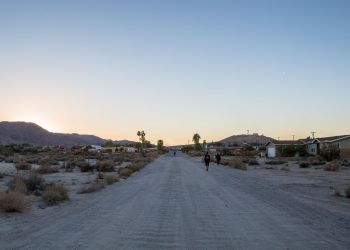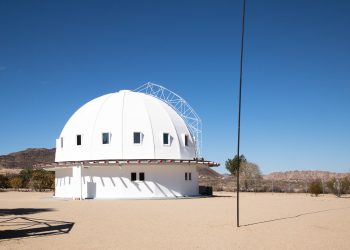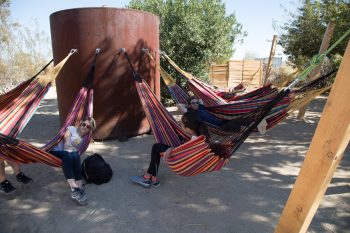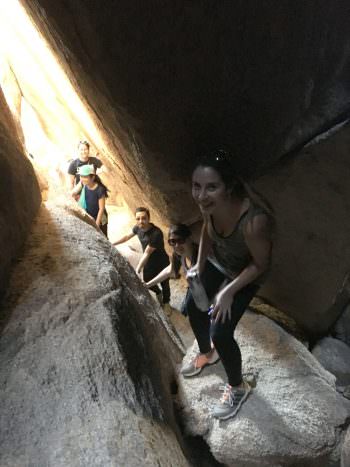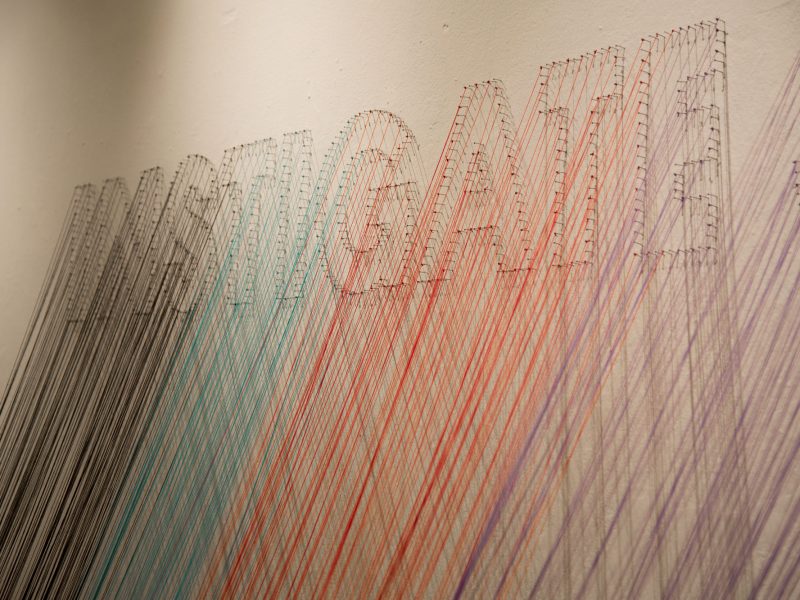Traveling every other year to the remote 29 Palms Inn located just north of Joshua Tree National Park, the Calarts Graphic Design MFA Program hosts its faculty and student desert retreat. The trip serves as an opportunity for the group to know each other outside the context outside of the studio, classes, and critiques. We bond over freshly prepared food, hiking through alluring other-worldly scenery that is unique to Joshua Tree, and dynamic workshops specially created by faculty and guest lecturers.
This year, our group was joined by an additional Calarts faculty member, artist and writer Ken Ehrlich who teaches in the Critical Studies department. Ehrlich treated us to a compelling slideshow of his general practice which incorporates video, sculpture, photography, and his most recent fascination, sound. Image after image, sound after sound, both students and faculty were awestruck with Ehrlich’s research and process that highlighted his collaboration and interest in architecture, technology, and community space.
Ehrlich came prepared with a sonic mapping workshop that required us to listen to a segment of Jack Kerouac’s spoken poetry and respond through an individual timed free write. Ehrlich encouraged us to pay attention to the sounds surrounding us and to represent them on a written page. Our responses ranged from poetic notations of the nearby kitchen noises to rote categorization of sound. Prompted by Ehrlich, we later journeyed out into the gentle twilight of the desert atmosphere to record ambient noise as a new way to map the somewhat unknown territory around us. We traced the car noises from the nearby road, the rustle of dried palm fronds, and the quiet chatter of the chickens on the property of the Inn.
Towards the end of the workshop, Ehrlich called for each set of partners to record a personal interaction. As the evening languidly transitioned into night, people spoke to each other, read from their free written exercises, and some even wrote poetry. After the sun finally set, Ehrlich then collected our recordings and played them for the amusement of the rest of the department.
The next day, a group headed for the Integratron, a geometric sound bath dome. The “ 38-foot high, 55-foot diameter, all wood dome was designed to be an electrostatic generator for the purpose of rejuvenation and time travel. The location of the Integratron is an essential part of its functioning. It was built on an intersection of powerful geomagnetic forces that, when focused by the unique geometry of the building, concentrate and amplify the earth’s magnetic field.” The Integratron seemed to fit comfortably within the informal theme of sound.
The second group hiked through the extra-terrestrial landscape of Joshua tree guided by faculty member Michael Worthington. Also on the journey was faculty member Lorraine Wild who served as our botanical liaison, pointing out desert vegetation and their beautiful but betraying natural defense systems, especially those of the prickly variety.
Later that evening, we feasted together in the warm air and savored the exquisite meal prepared traditionally by faculty member Tom Bland. Both vegetarians and meat eaters were satiated and soft chatter radiated into the dry night.
In the morning as the group cleaned what mess was left from the night before, we were slightly more aware of each other than we had been when we first arrived at the 29 Palms Inn just two days before. By broadening our awareness of our surroundings in a the frame of reference of sound, the group seemed to communicate with each other better than we had before the desert trip. One of the most remarkable traits of the CalArts desert trip is its ability to unite and bond its participants regardless of background, experience, and citizenship.


